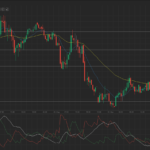 Brent crude fell to the lowest in almost four years, while West Texas Intermediate crude plunged to a 27-month trough amid rising global supply and worsening economic conditions in Europe, as well as worries over Chinas growth prospects.
Brent crude fell to the lowest in almost four years, while West Texas Intermediate crude plunged to a 27-month trough amid rising global supply and worsening economic conditions in Europe, as well as worries over Chinas growth prospects.
US November crude was down 1.78% by 7:34 GMT to trade at $84.24 per barrel on the New York Mercantile Exchange, having earlier plunged to $83.59, the lowest since July 2012. The American crude benchmark fell by 1.76% on Thursday to $85.77, the lowest close since December 2012, and is down over 6% this week, its steepest weekly decline since January.
Meanwhile on the ICE, Brent futures for settlement in the same month fell by 1.38% to $88.81 a barrel, having fallen to $88.11 earlier in the session, the lowest since December 2010. The European crude benchmark declined by almost 1.5% on Thursday to $90.05 and is set to post its third straight weekly loss. Brent traded at a premium of $4.57 to its US counterpart, up from Thursdays close at $4.28.
Oil prices extended losses on Friday after the most recent data in a string of bearish factors spurred new fears of lower demand prospects. Data by Deutsche Bundesbank showed on Thursday that German exports slumped 5.8% in August, the most since January 2009, while analysts had projected a 4% drop. Imports fell by 1.3%, defying economists anticipations for a 1% jump.
Earlier in the week, data by Destatis showed that Germany’s industrial production contracted by 4% in August, the most since 2009, in the latest sign of deteriorating economic conditions in the leading EU economy, and the Eurozone as a whole.
Meanwhile, the Energy Information Administration reported this Wednesday that US crude production surged to the highest level in almost three decades, while crude, gasoline and distillate fuel inventories gained.
Domestic crude production surged to 8.875 million barrels per day, the highest since 1986. Crude oil inventories expanded by 5.01 million barrels in the week ended October 3rd to 361.7 million, trailing analysts’ projections for a more moderate 2-million increase. Distillate fuel inventories, which include diesel and heating oil, rose by 439 000 barrels to 126.1 million, defying analysts’ forecasts for a 1.25-million drop. Gasoline stockpiles also rose, by 1.18 million barrels, to 209.7 million, mismatching expectations for a decline of 500 000 barrels.
Further fanning negative sentiment, the International Monetary Fund trimmed its global economic growth forecast to 3.8% next year, down from the previously expected in July 4.0%. Global oil consumption is expected to jump by 1.3% to 93.8 million bpd next year, trimming its previous projection by 165 000 barrels per day.
Ric Spooner, chief market analyst at CMC Markets in Sydney, commented for CNBC: “I think weve arrived at a pivotal support level for both Brent and West Texas Intermediate. $85 is the area where OPEC has intervened in the market in the past. Im not saying they will come in this time. They need to consider the overall supply situation – it might be too expensive.”
Saudi Arabias decision to cut prices for November exports to Asia to the lowest in six years came as a shocker, since market players broadly expected the worlds biggest crude oil exports to cut its output. However, the kingdoms decision indicated that supply from OPEC, which accounts for around 40% of global output, will remain unchanged at least until the groups November 27th meeting in Vienna. According to a Bloomberg survey of analysts, OPEC is expected to cut its production pace by between 500 000 and 1 million barrels per day.
The recently formed bear oil market forced investment bank Barclays to cut its average Q4 forecast for Brent to $93 per barrel from the previous $106, while WTIs price is now expected to average at $85, down from the preceding estimate of $98.
Daily pivot points
According to Binary Tribune’s daily analysis, West Texas Intermediate November futures’ central pivot point is at $85.93. In case the contract breaches the first resistance level at $87.79, it will probably continue up to test $89.82. Should the second key resistance be broken, the US benchmark will most likely attempt to advance to $91.68.
Having breached the first key support at $83.90, it may continue to drop and test $82.04. With this second key support broken, movement to the downside will probably continue to $80.01.
Meanwhile, November Brent’s central pivot point is projected at $90.11. The contract will see its first resistance level at $91.79. If breached, it will probably rise and test $93.54. In case the second key resistance is broken, the European crude benchmark will probably attempt to advance to $95.22.
Having penetrated the first key support at $88.36, it may continue down to test $86.68. With the second support broken, downside movement may extend to $84.93 per barrel.





